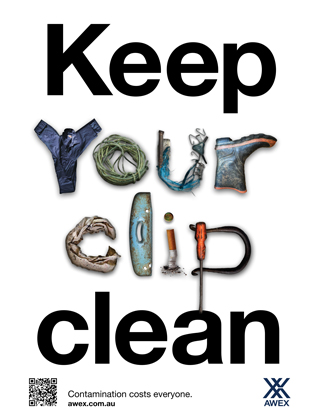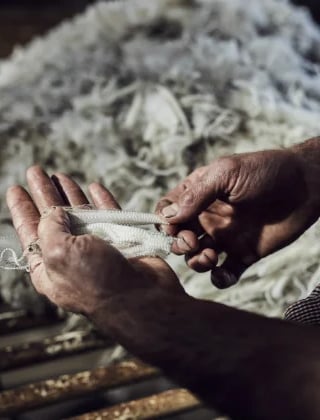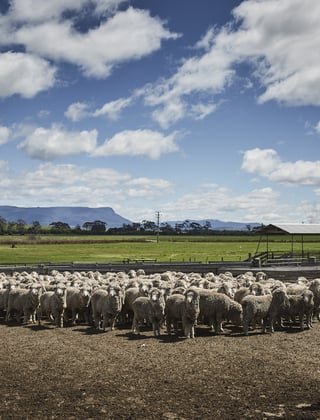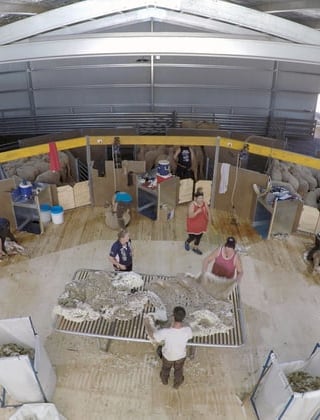Contamination costs: keep your clip clean
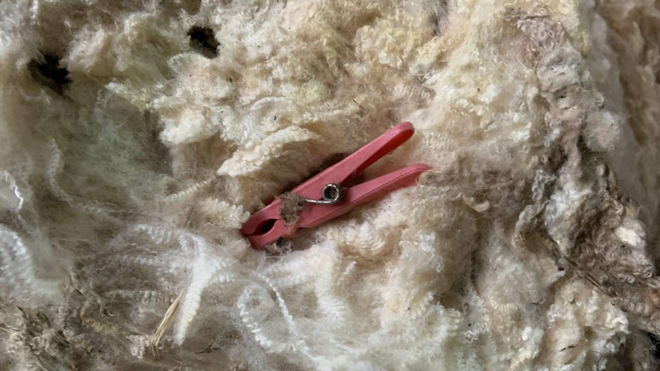
Woolgrowers can help preserve Australia’s reputation for producing a quality clip by being vigilant about preventing contamination. Contamination can be a major issue for wool processors and when found is subject to claims for financial loss.
The Australian wool industry has a long and proud history of quality wool clip preparation that is recognised and valued by our customers.
Global wool processing is diverse and often relies on highly specialised equipment, that can scour, comb, spin, and weave – arguably in itself a technical artform. While these wool processing systems are well set up to remove organic vegetable matter like dust, leaves and seeds, and wool byproducts like lanolin, some materials can cause havoc when they enter these processes, either by damaging finetuned specialist equipment, or by getting processed alongside with the wool fibres and thus contaminating the wool outputs being made.
With approximately 80% of Australian wool being processed in China, there is a strong message of support for Australian woolgrowers to achieve a clip free of contamination, from leaders in companies such as China SDIC International Trade Nanjing Co., Ltd., TianYu Wool Industry Co.,Ltd, Zhejiang Redsun Wool Textile Co. Ltd, and Zhejiang New Chuwa Wool Co., Ltd.

Ms Jane Guo, Chief Marketing Officer, TianYu Wool Industry Co. Ltd

Ms Shi Juping, Vice General Manager, Zhejiang Redsun Wool Textile Co. Ltd
Ms Shi Juping, Vice General Manager of Zhejiang Redsun Wool Textile Co. Ltd, where Australian wool is the company’s main raw material and more than 150,000 bales of Australian wool are processed annually, says contamination can have a significant impact on wool processing.
“There can be great difficulties to the processing enterprise, such as metal damage to scouring/combing equipment, and the mixing of cloths, gloves, towels, woven bags and other debris into wool, which becomes dispersed after opening, resulting in the inability of the entire lot of wool to be used normally. A small piece of cloth, once mixed into wool, can become tens of thousands of fibres,” Ms Juping said.
Ms Fiona Raleigh, Wool Classer Registrar, AWEX, reminds woolgrowers that anything and everything is a potential contaminant.
“We usually think about contaminants as hard or soft. Hard contaminants damage processing equipment and include common items in and around the shed such as wool hooks, lamb batts, loose wire, and tools,” Ms Raleigh said.
“Soft contaminants break up and act like wool fibres potentially contaminating large portions of processed product and include rags, clothing, and towels. Most significant of these soft contaminants would be poly propylene items, like baling twine and fertilizer bags which break up easily.”
So where do contaminants come from? Wool is bulky and by nature has natural adherence, so contaminants can attach to the wool on a sheep in the paddock throughout the year or can attach to the wool during shearing or can be dropped or fall into a wool bin or bale being pressed in the wool shed.
“A misconception of contamination control is that the wool classer and harvesting staff can manage contamination by removing items or fibres as they see them, Ms Raleigh added.
“This does play a part and is a critical quality control practice, but it unfortunately cannot catch everything. Removing potential contaminants from the wool-growing environment on-farm, as well as cleaning out the wool shed of potential contaminants before and during shearing is critical.”
Tips to eliminate contamination
Contamination prevention happens year-round both on-farm (paddock) as well as within the wool shed, and everyone has a part to play.
So, what can a woolgrower do to best Keep Their Clip Clean?
- Paddock hygiene is very important, such as picking up loose wire and rubbish. Fence off farm tip areas from access by sheep.
- Look at your practices during feeding including disposal of baling twine and bale wrap.
- Monitor the storage of fertilizer to make sure bags retain their integrity and don’t start to ‘break down’ especially in areas sheep may populate.
- Never use polypropylene bags as rubbish bins, curtains/covering windows or sky lights, or for portions of oddment wool.
- Shearing sheds can be ‘multipurpose’ storage and workshop spaces. This introduces risk. Think about the activities you undertake in your wool shed and what you introduce into the area. Reconsider an activity if it has a high chance of contributing to contamination. Items stored in a shed should be partitioned off and checked regularly. Never store chemicals in a shearing shed.
- Vermin and bird control is another example of limiting contamination risk, including access by feral and domestic cats.
- Before your shearing date, carry out a full shed inspection and clean all areas. This ensures staff arrive to a contamination-free workplace.
- Provide plenty of large empty rubbish bins which are regularly emptied during shearing.
- Provide storage spaces, hooks, and shelves for staff to keep their personal items away from wool areas.
- Keep dogs out of the wool area.
- Supervise visitors and children.
- Provide a large supply of paper for bulk class bales.
Keep the Clip Clean poster for woolgrowers
If you receive a hard copy of Beyond the Bale in the post, the March edition will be accompanied by the ‘Keep Your Clip Clean’ poster. Woolgrowers can also download a high resolution version (3.6MB) of the poster from www.awex.com.au/media/2367/2024-kycc-a2-poster.pdf. You are encouraged to put up the poster in your shearing shed.
This article appeared in the March 2024 edition of AWI’s Beyond the Bale magazine. Reproduction of the article is encouraged.






